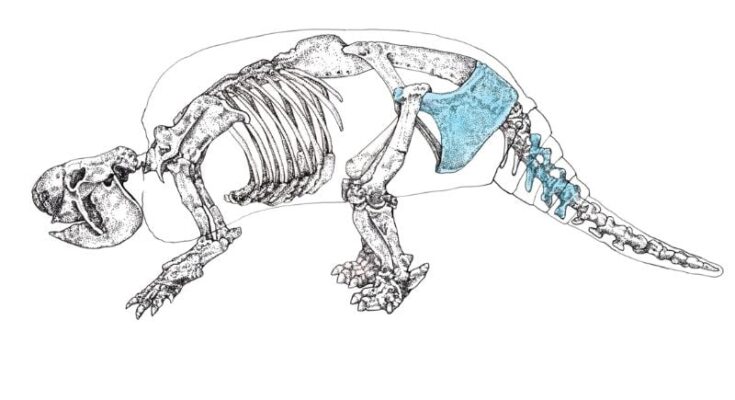Researchers have found evidence that people in Argentina, over 20,000 years ago, hunted and used stone tools to cut up a huge armadillo-like animal. This finding, based on marks found on the creature’s ancient bones, is important. It shows that humans may have arrived in the Americas much earlier than scientists once believed, maybe even more than 25,000 years ago.
Miguel Delgado, a researcher at the National University of La Plata in Buenos Aires, explained that these ancient animals are related to today’s armadillos. They had tough scales and could roll into a ball when in danger.
The fossil found belongs to a smaller species of an extinct armadillo called Neosclerocalyptus. Delgado noted that this creature weighed about 300 kilograms (660 pounds) and measured around 180 centimeters (almost 6 feet) long, including its tail.
Armadillo fossil pointing to early human migration to South America is about 20,811 to 21,090 years old
A bulldozer unearthed the animal’s fossilized backbone and pelvis along the Reconquista River near Merlo in the Buenos Aires area.
Researchers used radiocarbon dating on the bones and shells found nearby. They discovered that the armadillo remains were between 20,811 and 21,090 years old. This information was published Wednesday in the journal PLOS One.
At first, the cut marks on the fossils were not visible. However, after cleaning the bones, researchers found 32 straight marks. The team carefully analyzed these marks and determined they weren’t created by rodents, carnivores, or other factors like trampling, Delgado said.
#Fossil bones found in #Argentina of a large armadillo relative with cut marks suggestive of butchering indicate humans were present in southern South America some 21,000 years ago, according to researchers, earlier than previously thought. pic.twitter.com/QsYXpTobTW
— DD News (@DDNewslive) July 18, 2024
The team concluded that the cut marks matched those made by stone tools. The marks’ locations indicated the animals were deliberately butchered for their meat. Researchers noted that the cuts were concentrated on dense muscle areas of the armadillo, such as the pelvis and tail.
“The cut marks were not randomly distributed but focused on those skeletal elements that harbored large muscle packs like the pelvis and the tail,” Delgado said.
Authors provided “convincing evidence” of early human migration to South America
Paleoanthropologist Briana Pobiner, a research scientist at the Smithsonian National Museum of Natural History, praised the study. She stated that the authors provided “convincing evidence” that humans butchered this extinct armadillo 21,000 years ago.
“The authors have done a solid job of demonstrating through qualitative and quantitative analyses that the cut marks on the armadillo fossils are most likely to have been made by humans,” said Pobiner in an email. She was not involved in the study.
The timing and methods of the first human migration to North and South America have long puzzled experts. These continents were the last to be populated as humans spread out from Africa. The topic remains a subject of debate and is not well understood.
Estimates for when the first people arrived vary widely from around 13,000 years ago to over 20,000 years ago. However, the earliest archaeological evidence in these regions is limited and often controversial, as reported by CNN.



